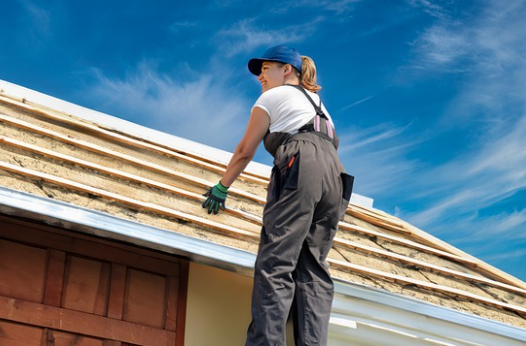
The Art of Fixing Your Tile Roofing Woes
Tiles have a timeless charm and are a staple of many architectural designs around the world. From the ancient patterns that still grace the roofs of Mediterranean villas to the contemporary forms atop modern homes, tile roofing is a testament to durability and style. However, as beautiful as they are, tile roofs aren’t invincible. They can face various issues over their lifetime, which calls for meticulous repair work. In this guide, we’ll take you through the steps to help maintain and restore the iconic beauty of your tile roof.
Understanding the Anatomy of Your Tile Roof
Before you can repair something, it’s crucial to understand how it works. Tile roofing systems have a layered structure that includes battens, sheathing, underlayment, and the tiles themselves. The underlayment plays a vital role in waterproofing and protecting the roof deck against the weather. The tiles are positioned in overlapping layers to encourage water runoff.
Common Tile Roofing Problems and Solutions
Broken or Cracked Tiles
roofing solutions is key to catching broken or cracked tiles before they lead to more significant issues. Breakage can occur due to weathering, impact, or improper installation. Replacing these tiles involves carefully removing the surrounding ones, using proper lifting techniques, and then securing new tiles in place.
Slipped Tiles
Slipped tiles are those that have shifted out of place, often due to the nails or adhesive that held them in place being compromised. This scenario creates vulnerable areas for water intrusion. Correct the issue by repositioning the slipped tiles, and ensure they are adequately secured to prevent future slippage.
Missing Tiles
A tile that has gone missing creates an immediate need for repair, as it leaves your roof exposed to the elements. Replacing a missing tile means fitting a new one in its place and ensuring it’s well-integrated with the surrounding tiles for a seamless look and function.
Underlayment Deterioration
If the underlayment is compromised, it can lead to leaks and, over time, damage to other roofing components. Minor tears can sometimes be patched, but in many cases, full replacement is necessary. Make sure the underlayment is appropriate for your specific tile type and that it is properly installed.
Flashing and Waterproofing Issues
Flashing is used to seal vulnerable areas on your roof, such as around chimneys and vents. If flashing becomes loose or damaged, it can lead to leaks. Regularly check your flashing for any issues, and reseal or replace where needed to ensure a watertight seal.
Safety Precautions for DIY
Repairing a tile roof is a task that requires caution and adherence to safety guidelines. Here are crucial safety measures to keep in mind:
• Use sturdy, high-quality ladders that extend at least three feet above the edge of the roof.
• Wear slip-resistant shoes with soft soles to maintain traction on the potentially slippery roof.
• Use a safety harness if you’re unsure about your footing or if the roof pitch is steep.
• Work with a partner who can assist you, especially when removing and replacing tiles.
Hiring a Professional
While many repairs can be done by a knowledgeable DIYer, some issues are best left to the professionals. Consider hiring a roofing contractor if:
• The repair requires you to step on a steeply pitched roof or you’re uncomfortable with heights.
• You’re dealing with extensive roof issues, such as a large number of missing tiles or widespread underlayment damage.
A professional can provide the expertise, specialized tools, and experience necessary to perform complex repairs thoroughly and safely.
Final Thoughts
Regular maintenance and timely repairs are crucial to keeping your tile roof in optimal condition. By understanding the structure of your roof, recognizing common issues, and taking appropriate safety measures, you can either conduct minor repairs yourself or know when to call in the experts. Remember, the effort you put into your tile roofing repair today can extend the lifespan and maintain the allure of your home for years to come.